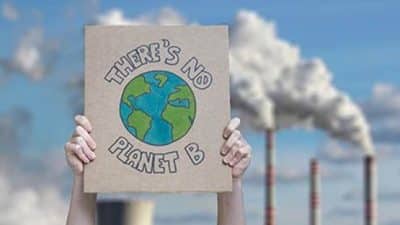
Our climate crisis
Ancient giant sequoias in California, once considered impervious to flames, are again under threat from wildfires, this time in the Yosemite National Park. The wildfire has grown into the state’s largest of the season. Bristlecone pine trees in Death Valley, which have lived for more than 1,000 years, are likewise under threat from climate change induced drought and bark beetle infestations.
Europe experienced a bout of exceptional heat across Britain, France, Spain and Portugal that then moved east across central Europe. Temperatures surged to as high as 117 degrees Fahrenheit over the Iberian Peninsula, and the United Kingdom saw the hottest temperatures ever recorded there. People have been evacuated from their homes across southern Europe due to heat related wildfires blistering the landscape.
Deadly climate induced summer heatwaves and the war in Ukraine are pushing European countries—but also other countries like China and India—into a desperate scramble to secure energy for electricity. This is upending plans to reduce the consumption of fossil fuels. In effect, our ability to slow down climate change is being undermined by the producers of the very fossil fuels that are responsible for climate change.
Politics and policy
President Biden has made a commitment to reduce greenhouse gas emissions by 50 to 52% below 2005 levels by 2030. A study by an independent research firm, however, reveals that our country is on track to reduce emissions by only 24 to 35% below 2005 levels by 2030. It will take substantial additional policy action to reach the goal of reducing emissions 50% by 2030.
In a fast moving story, after months of negotiations, Sen. Joe Manchin announced that he could not support climate legislation, leaving President Biden with the option of making some climate related executive actions. Then, after lots of urging from corporate CEOs, other senators, climate activists, and labor unions, Sen. Manchin announced that he and senate leader Chuck Schumer had agreed on the outline of a bill involving $369 billion in climate incentives in the newly dubbed Inflation Reduction Act, H.R. 5376 (117). If enacted into law, this promises to be a huge climate action game changer.
A conservative climate advocate says the recent Supreme Court decision in West Virginia vs. EPA demonstrates the need to further incentivize clean energy innovation rather than relying on regulations to slow greenhouse gas emissions. Empowering innovators will play to America’s comparative advantage and provide cleaner choices at lower prices.
California’s aggressive policy of cutting back on the use of fossil fuels is experiencing pushback from localities that depend heavily on tax revenue from oil, gas and coal to fund their schools, hospitals and roads. Because California is ahead of other states in the fight against climate change, this struggle portends similar future struggles across the country.
Rising temperatures in heavily populated countries like Indonesia and India are encouraging more and more people to invest in home air conditioning, which is still relatively uncommon in their countries. This creates a vicious cycle because these countries still rely largely on inefficient, carbon emitting coal-fired electric power plants, which inordinately contribute to global warming. Breaking out of this cycle will require major policy changes and clean energy investments.
Mainstream economic and political thinking assumes that social stability and rising standards of living depend on economic growth. Our pursuit of growth is, however, causing great ecological harm and incurring more costs than gains. Economist Herman Daly, therefore, advocates a steady-state economy, which forgoes the environmentally destructive drive for growth. It’s also why Virginia conservationist Brian Czech founded the Center for the Advancement of a Steady State Economy in 2003.
The Federal Energy Regulatory Commission has received lots of public reaction against the request by Mountain Valley Pipeline to extend the project for an additional 4 years. Submissions opposing the extension include a letter from 27 Virginia state legislators, a sign-on letter by 270 participating organizations, as well as thousands of individual comments. Alternatively, it appears that Sen. Joe Manchin has received a pledge from Democratic leaders that they will support finishing this contested pipeline as part of his agreement to support the $369 billion climate bill.
The Sierra Club Virginia Chapter has given our area state legislators a failing grade on energy policies. Here’s the score: Sen. Emmett Hanger (R-24), Del. John Avoli (R-20), Del. Tony Wilt (R-26), Del. Chris Runion (R-25) and Del. Ronnie Campbell (R-24) all received an “F” rating.
Energy
A Consumer Reports survey finds that more than a third of Americans would consider buying or leasing an EV. Respondents who said they would not consider an EV, raised concerns about charging logistics, vehicle range, and the overall cost. While some of these worries are perhaps justified, they may have more to do with perception than reality.
Buying an EV is now a better deal than a comparable car that runs on gasoline, due to much lower fuel and maintenance costs. For example, comparing the numbers on a 2022 Nissan Leaf and a 2022 Nissan Sentra, the Leaf will pay for itself in 5 years even with its higher sticker price. It will pay for itself in less than one year with a $7,500 tax credit.
The fastest way to slash greenhouse gas emissions is to switch as many buildings as possible to using electricity as their sole power source for heating and cooling. The fastest way to achieve that is through installing two-way heat pumps that both heat and cool. The cost of manufacturing them is only a few hundred dollars per unit more than a central air-conditioner. We should, therefore, encourage the federal government to incentivize manufacturers to make that simple switch.
Walmart announced that they agreed to buy 4,500 electric vans from manufacturer Canoo. The vans will be used to deliver online orders in a way that’s environmentally sustainable, beginning next year.
Buoyed by stronger than expected demand, Ford has set ambitious global production targets to manufacture over two million EVs by 2026. For perspective, Tesla, the largest EV manufacturer at this time, built 936,000 EVs in 2021. Ford’s line of EVs will include cars, pickup trucks, and commercial vans.
China installed eighty percent of the world’s new offshore wind capacity last year. Even though that percentage is expected to drop significantly in the future, China is expected to dominate the sector for years to come.
President Biden’s plan to open up more than 700,000 acres in the Gulf of Mexico to commercial wind farms is receiving surprising support from the oil and gas industry in the region. That’s because they see their infrastructure and skills used for oil rigs in the Gulf as transferable to the offshore wind industry.
After intense pressure, the US Post Office has pledged to electrify at least 40% of its new delivery fleet. This is a significant change from its earlier commitment to have only 10% EV trucks in its new fleet. This reversal goes a long way toward President Biden’s goal for the entire government fleet to be EVs by 2035.
Heatwaves in Texas have broken records for energy demand at least 11 times this summer. What prevented the state from experiencing rolling blackouts is that it has nearly tripled its solar capacity in the past year.
Climate justice
Caribbean nations are trapped between being indebted to the global financial system and a looming climate disaster. The legacy of colonialism that syphoned resources to rich countries and the post-colonial experience of being indebted to foreign banks shapes the crisis. Mia Mottley, the prime minister of Barbados, is fighting for a way out through tough negotiations with the International Monetary Fund to equitably restructure her nation’s debt. The goal is finding the necessary financial resources needed to mitigate the effects of climate change.
The Presbyterian Church USA voted to divest from five oil companies that it believes are not doing enough to address climate change. These companies join a divestment list of 85 other companies, most with ties to the military or weapons industry. A spokesman for the denomination said, “Divestment is never the goal. Corporate change is the goal.”
The climate anxiety discussion has a whiteness problem because the perspectives of marginalized people are often not included in the conversation. Climate anxiety as a term can be very privileged. People experiencing climate induced trauma in places like the Philippines and India may not even have words for such trauma. The hope is that the conversation will evolve to include marginalized people and their experience.
Climate action
Searing heatwaves in urban centers are an increasingly common and deadly manifestation of our warming planet. In response, the cities of Phoenix, Miami, and Los Angeles have recently hired a “chief heat officer” to help them focus on the risks posed by sweltering temperatures and to seek opportunities for adapting.
Faith leaders in West Virginia are trying to change minds about the climate crisis by moving the conversation to a moral imperative instead of the typical political discourse. They begin small by advocating for planting native species and energy efficiency in places of worship but also recognize the importance of public advocacy.
The US Department of Energy recently hosted the Carbon Negative Shot Summit, which explored low-cost, clean and innovative ways to store huge amounts of carbon. Energy Secretary Jennifer Granholm said that the Biden administration’s priority continues to be preventing emissions from entering the atmosphere as she insisted, “Carbon dioxide removal is key to restoring our climate.” Carbon removal technology is in its infancy and remains prohibitively expensive.
California keeps scaling up battery storage in its effort to convert to renewable energy. It now has 3,100 megawatts of utility-scale battery storage systems but this is still small compared to other energy sources. For perspective, a large coal, gas or nuclear power plant has a capacity of about 2,000 megawatts. Natural gas power plants continue to regularly provide more than 13,000 megawatts to the California grid.
A consortium of construction firms, property developers and building engineers have pledged to increase the proportion of “low-emissions” concrete that they use to 30% by 2025 and 50% by 2030. One way to do that is by adding aggregates such as fly-ash, slag and rice hulls to cement mixes. The bigger challenge is cutting down the emissions used to make Portland cement, which is manufactured by heating limestone to temperatures of greater than 1,400 degrees Celsius (2550°F)—a level of heat that’s hard to achieve without burning fossil fuels.
Compiled by Earl Zimmerman, Climate Action Alliance of the Valley










